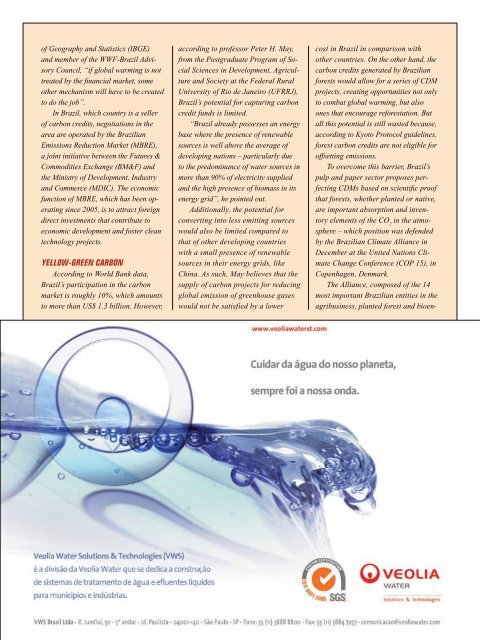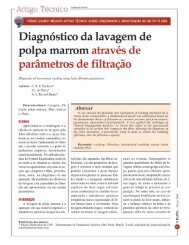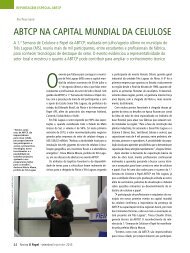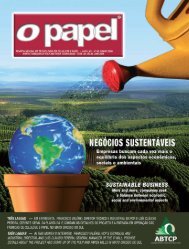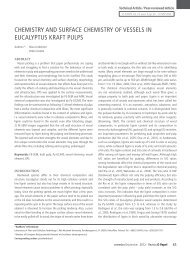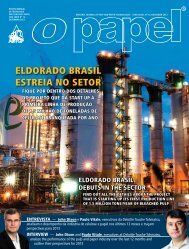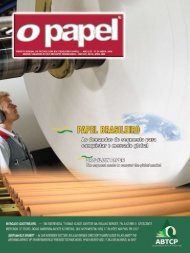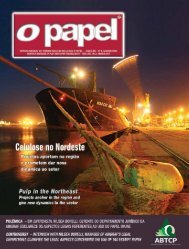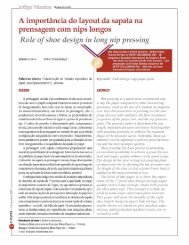mercado de créditos de carbono - Revista O Papel
mercado de créditos de carbono - Revista O Papel
mercado de créditos de carbono - Revista O Papel
You also want an ePaper? Increase the reach of your titles
YUMPU automatically turns print PDFs into web optimized ePapers that Google loves.
of Geography and Statistics (IBGE)<br />
and member of the WWF-Brazil Advisory<br />
Council, “if global warming is not<br />
treated by the financial market, some<br />
other mechanism will have to be created<br />
to do the job”.<br />
In Brazil, which country is a seller<br />
of carbon credits, negotiations in the<br />
area are operated by the Brazilian<br />
Emissions Reduction Market (MBRE),<br />
a joint initiative between the Futures &<br />
Commodities Exchange (BM&F) and<br />
the Ministry of Development, Industry<br />
and Commerce (MDIC). The economic<br />
function of MBRE, which has been operating<br />
since 2005, is to attract foreign<br />
direct investments that contribute to<br />
economic <strong>de</strong>velopment and foster clean<br />
technology projects.<br />
Yellow-green carbon<br />
According to World Bank data,<br />
Brazil’s participation in the carbon<br />
market is roughly 10%, which amounts<br />
to more than US$ 1.3 billion. However,<br />
according to professor Peter H. May,<br />
from the Postgraduate Program of Social<br />
Sciences in Development, Agriculture<br />
and Society at the Fe<strong>de</strong>ral Rural<br />
University of Rio <strong>de</strong> Janeiro (UFRRJ),<br />
Brazil’s potential for capturing carbon<br />
credit funds is limited.<br />
“Brazil already possesses an energy<br />
base where the presence of renewable<br />
sources is well above the average of<br />
<strong>de</strong>veloping nations – particularly due<br />
to the predominance of water sources in<br />
more than 90% of electricity supplied<br />
and the high presence of biomass in its<br />
energy grid”, he pointed out.<br />
Additionally, the potential for<br />
converting into less emitting sources<br />
would also be limited compared to<br />
that of other <strong>de</strong>veloping countries<br />
with a small presence of renewable<br />
sources in their energy grids, like<br />
China. As such, May believes that the<br />
supply of carbon projects for reducing<br />
global emission of greenhouse gases<br />
would not be satisfied by a lower<br />
cost in Brazil in comparison with<br />
other countries. On the other hand, the<br />
carbon credits generated by Brazilian<br />
forests would allow for a series of CDM<br />
projects, creating opportunities not only<br />
to combat global warming, but also<br />
ones that encourage reforestation. But<br />
all this potential is still wasted because,<br />
according to Kyoto Protocol gui<strong>de</strong>lines,<br />
forest carbon credits are not eligible for<br />
offsetting emissions.<br />
To overcome this barrier, Brazil’s<br />
pulp and paper sector proposes perfecting<br />
CDMs based on scientific proof<br />
that forests, whether planted or native,<br />
are important absorption and inventory<br />
elements of the CO 2<br />
in the atmosphere<br />
– which position was <strong>de</strong>fen<strong>de</strong>d<br />
by the Brazilian Climate Alliance in<br />
December at the United Nations Climate<br />
Change Conference (COP 15), in<br />
Copenhagen, Denmark.<br />
The Alliance, composed of the 14<br />
most important Brazilian entities in the<br />
agribusiness, planted forest and bioen-<br />
O PAPEL - Julho 2010<br />
41


